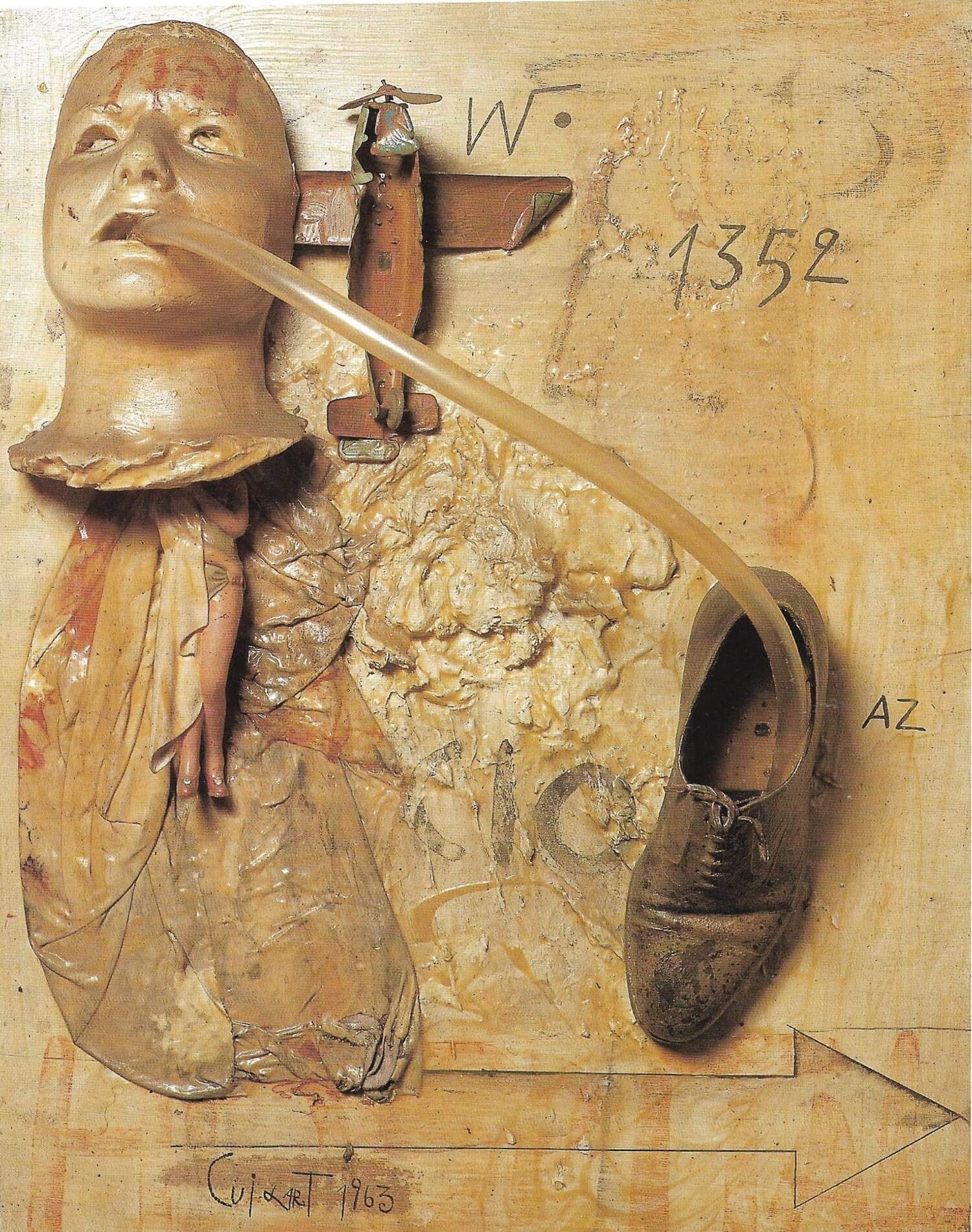
Modest Cuixart
Modest Cuixart grew up in a family of doctors and pharmacists in a cultural environment. He began his medical studies to follow the family tradition but left after two years to pursue painting, his true calling.
Together with his cousin Antoni Tàpies, Cuixart met Joan Brossa, Joan Ponç, philosopher Arnau Puig, and Joan Tharrats, with whom he co-founded the magazine Dau al Set in 1948. Thanks to a scholarship from the French Institute, Modest traveled to Paris with Antoni Tàpies in December 1950. There, he met Picasso and Miró, attended the Sorbonne, and immersed himself in the “art autre” movement of Dubuffet and Fautrier.
In the late 1950s, Cuixart created his famous metallic drippings, which are part of his unique material-based informalism. Praised by the world’s most prestigious critics as a true innovator of informalism on an international scale, he won some of the most coveted awards: the Gold Medal at the prestigious Swiss Abstract Painting Prize and the Grand Prize for Painting at the 5th São Paulo Biennial, competing against figures like his admired Francis Bacon, Alberto Burri, Karel Appel, and Lucio Fontana.
This was a splendid period, during which his success multiplied, participating in major international events and exhibiting in the leading museums and galleries across numerous countries. High-profile collectors worldwide acquired his works. Critical articles from top critics were published in prestigious international magazines like Art Actuel International (Lausanne), Quadrum (Brussels), and Arts Magazine (New York), among many others. André Breton considered him when selecting a Spanish artist for the 1959 International Surrealist Exhibition E.R.O.S., alongside Marcel Duchamp, for the Daniel Cordier gallery.
In the early 1960s, Cuixart abandoned informalism, influenced by Bertold Brecht’s thinking, focusing on human experience and objects. Following his dramatic burnt dolls (Nameless Children), which symbolize the innocent victims of violence, he entered a phase of great originality, combining organic, sinister, and erotic traits. This period marked his success in New York, where he merged material-based informalism with graphic elements in ink and soft colors.
The work selected for the Drap-Art image this year, Post Salut (1963), comes from this period. According to Raquel Medina, PhD in Art History, ACCA-AICA critic, and independent curator:
“This piece reflects a moment when the artist felt that the informalism that had brought him so much success had become obsolete. New concerns about the human condition emerge in his work. These are the first pieces in which he incorporates objects and fragments (dolls, airplanes, shoes…) to reflect and denounce the tragedies of innocent victims in all wars. In fact, he evokes and exorcises one of his personal ghosts: the terrifying bombings of Barcelona that he experienced at the age of 13.”
